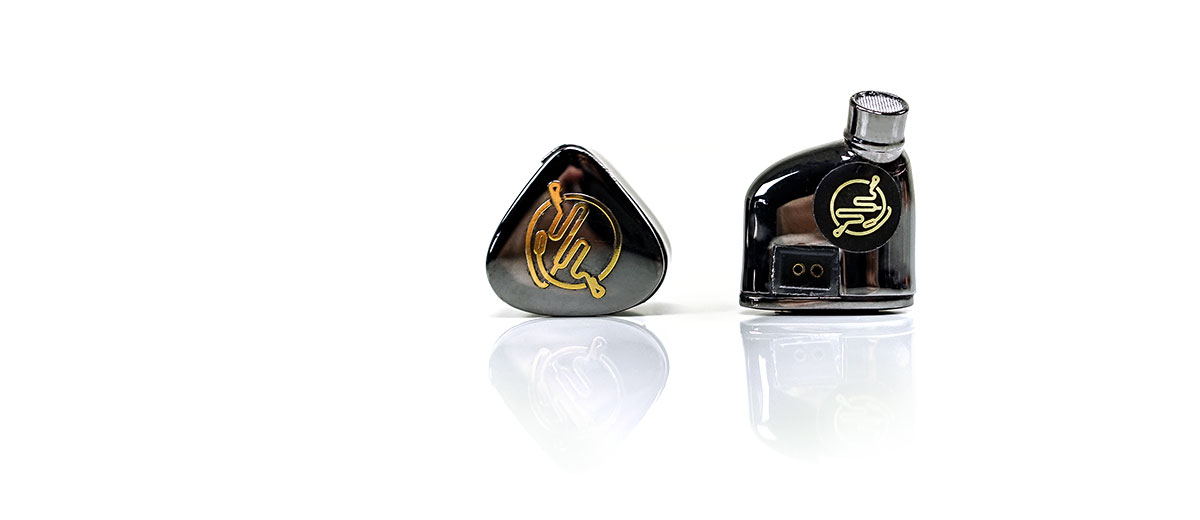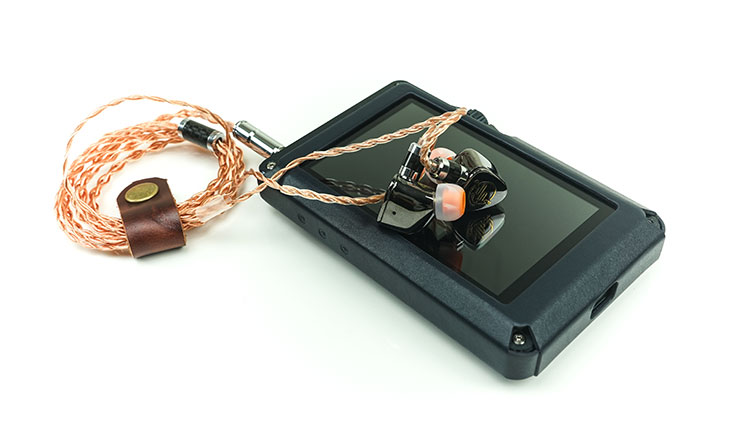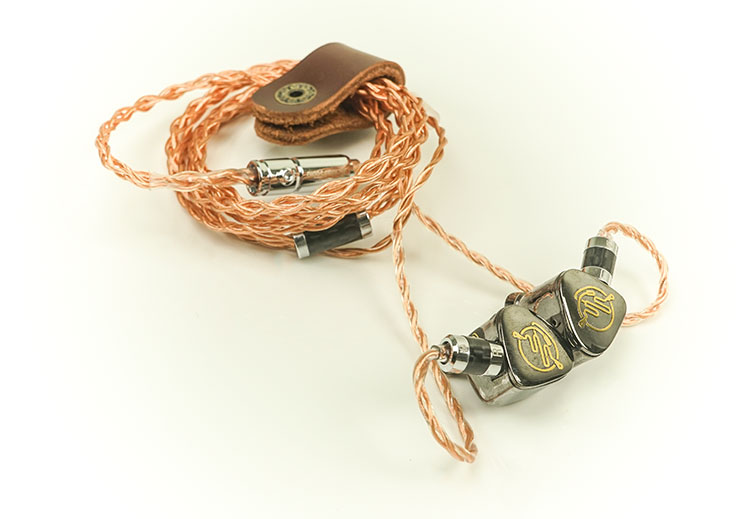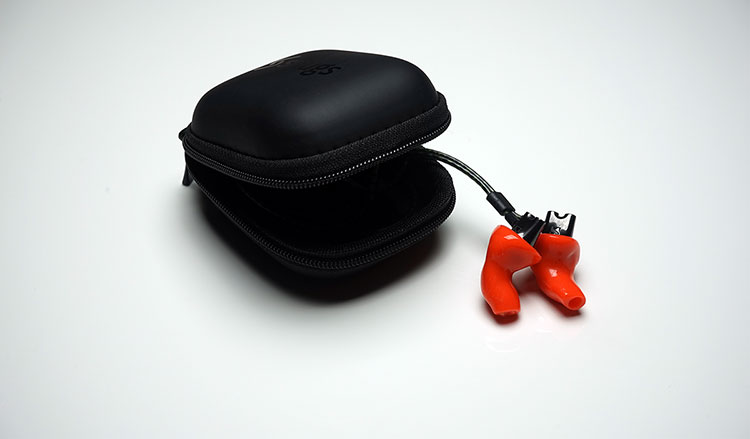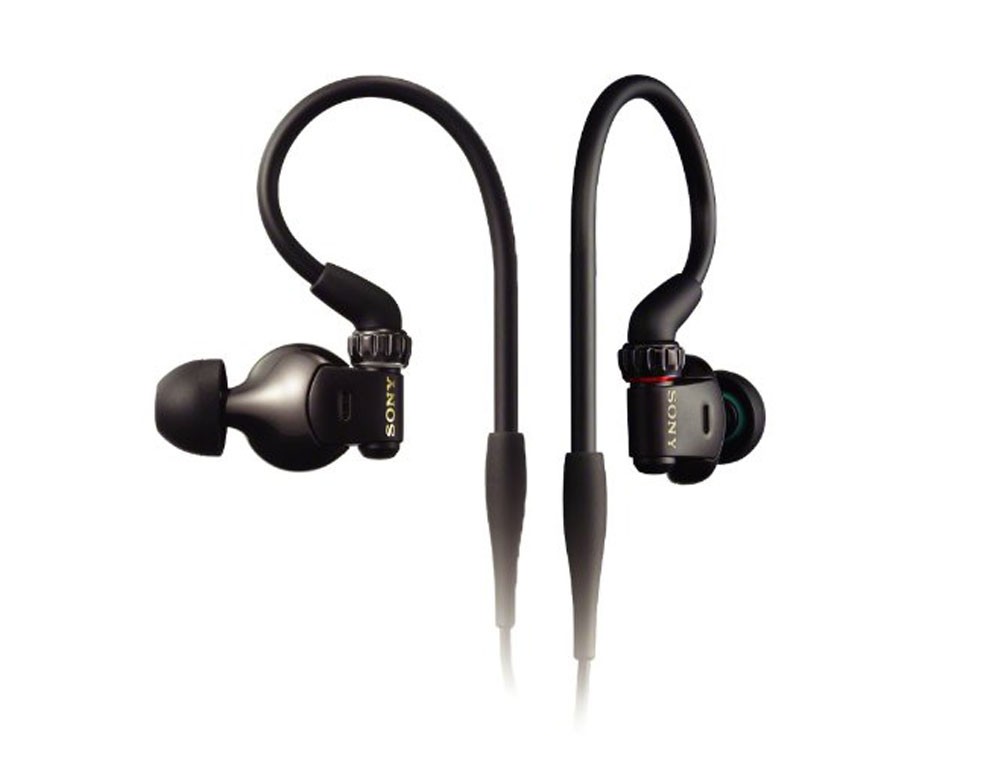Sound Impressions
Tonality & Presentation
The Galaxy V2 is more of a U-shaped presentation with an emphasis on clarity. It delivers a fairly “musical” tonality with a healthy dose of sub-bass rumble and treble contrast. This is not Vega-like in terms of physicality despite the excellent levels of low-end quantity and texture. It has a degree of restraint that prevents it from overpowering the gently dipped midrange.
Combine this with a forward or energetic upper mids and lower treble performance and you get a distinct fundamental combined with an odd-harmonic emphasis. This translates to an instrumental timbre that is not rich or thick sounding but can deliver good power and sound fairly “peppy” in its delivery. This Galaxy V2 will sound snappy with an attack emphasis that is very much on the front foot.
It will also sound quite quick for a dynamic driver delivering an excellent transient response and perceptibly high levels of detail and individual note articulation. I tend to find titanium drivers to play on the cooler side with plenty of detail and contrast and the Galaxy is a classic example of that Ti driver sound.
Soundstage
In terms of staging the Galaxy V2 has a gentle roll off around 60Hz and lower and from around 8K onwards so it is not quite as deep or tall sounding as the Vega though it is airy enough sounding. I would say it paints a reasonably natural soundstage, a few rows back in a concert feel but not hugely distant or diffuse sounding. Width is a little better than I expected given the slight dip in the mids you wouldn’t classify the Galaxy V2 as narrow sounding.
Bass
There is roughly a +10dB difference between the peak of the Galaxy’s bass elevation and its transition into the lower mids. There is a slight low-end roll-off of around a -4-5dB difference between 20Hz and 60Hz so the power is ok but not as physical sounding as the Vega which is significantly more elevated in the same region.
The Galaxy V2 has more of a gentle rise and sustained elevation from 60Hz to 150Hz before dropping down to 1k (-10dB). You get just enough power for a solid fundamental and a minor injection of mid-bass warmth that doesn’t travel at all into the lower mids. This is not a bass head low-end signature, it is not visceral or aggressive but it is solid, with good texture and excellent detail. It is also one of the snappier sounding dynamic drivers out there. That DD decay is natural but not overly stretched and sluggish and remains well defined with
Mids
The Galaxy V2 has that classic drop from the mid-bass through the upper bass into the lower mids by around -10dB. It stays relatively linear until about 2k before starting to elevate into the upper mids and lower treble. This pushes the lower mids behind a lot of higher pitched vocals and its peppier upper mids and treble but unlike some cheaper dd v-shaped drivers I do not find this particular midrange to sound muted or veiled.
Instrumental timbre is clean, lean and decidedly neutral. Any power or weight is delivered by the mid-bass quantity and the more controlled sub-bass presence than lower midrange warmth and presence. Instrumental separation is excellent with plenty of clarity and space between each. The driver does an excellent job with complex and fast-paced guitar work such as traditional speed metal and thrash.
Vocals
Higher pitched vocal passages will sound further forward over male or lower pitched vocals below 1k. Guttural unique vocals such as Dave Mustaine lack a little power and body because of that odd harmonic bias. They sound clean with nice detail though and come through ok over any background ‘din’, they just need a bit more weight.
Female vocals, especially those with registers above 1k and less breathy or edgy sounding will do well with the Galaxy V2 such as Daya, Katy Perry, and Lorde. I found the likes of Ellie Goulding and similar high-pitched vocalists to sound a little too edgy and sibilant on the Galaxy V2, especially with neutral or bright sources.
Treble
The top-end on the Galaxy V2 is lower treble focused with a distinct rise in energy from 2k onwards to around 6-7k before gradually dropping away. The only exception is a smaller nudge around 10-12k for sparkle and air. I do want to emphasize the Galaxy V2 has plenty of headroom and air.
There is a fine balance in this tuning and ultimately a lot of factors will come into how much you can get into the treble tuning of the Galaxy V2. No doubt the clarity and perceptible detail will be there because of that forward and energetic lower treble tuning. However, for those with neutral sources or bright recordings, you will get a dose of sibilance and a hardness to the attack that some will find fatiguing.
That sharper attack can also be a benefit in some cases. Instrumental harmonic orders that cross over the Galaxy V2’s upper mids and lower treble will produce a very clean and precise sound. Small details will be easily picked out such as acoustic string plucks or triangle strikes. Percussion arrangements such as hi-hats and cymbals will be more lively and present also. I can see this a perfect tuning for classical music enthusiasts and I must profess it also plays well with my personal favorite electronic genre, dark synth wave.
Matchability
Efficiency
The Galaxy V2 is rated at 16Ω and 103dB which is reasonably efficient for a dynamic drive of this size and should not present any issues out of weaker sources at least in terms of volume. It will take a bit more power than your typical multi-BA IEM.
For example, hyper-efficient IEMs such as the Andromeda will be a good 15-20 digital steps lower on my own LG G6 compared to the Galaxy V2. It will run neck and neck for volume with the IE800 which is also a 16Ω single dynamic driver.
Noise
I do wonder though is the 104dB sensitivity rating is a little understated because the Galaxy V2 is much more sensitive to higher noise floors than the 125dB rated IE800. Generally, I find dynamic driver IEMs to perform well with higher noise floors but this one is a bit jumpier than most.
Again, another example. With zero audio signal and just plugged into the low gain on the ALO Audio Continental Dual Mono the Galaxy V2 picked up a lot of background hiss in high gain and a little in low gain. Compare that with the Vega which has no hiss in low gain and slight hiss in high gain. The IE800 was noise free on both settings and the classic MDR-EX1000 from Sony was closer to the Vega than the Galaxy V2.
Scaling & Synergy
I would classify the Galaxy V2 as having mild scaling properties which place it on a similar level to how the Lyra II scales up. The Galaxy V2, like the Lyra II, will tighten up nicely in terms of dynamic range and slightly better depth and impact but not a huge difference between a decent DAP and a more powerful portable amp.
In fact, I would say the noise floor on some portable amps make the Galaxy V2 much more suited to DAPs. This is not like the CA Vega and the Flares Pro whose power to performance ratio are linked together.
The important pair-up for the Galaxy V2 is really more to do with resolution and synergy of sound. Any amp with a fairly good level of dynamic range, a low SNR and plenty of detail will get the best out of the Galaxy V2. DAPs such as the AK380, Sony’s W1Z and the Opus#2 will sound smoother, more refined and detailed than X5iii or the Cayin N5ii. Good news for R6 users, I can detect no issues on the 10Ω output impedance of the R6 when paired with the Galaxy V2.
Select Comparisons
Campfire Audio Vega
$1299
Technical
The Vega is a single dynamic driver universal IEM. The driver being used is 8.5mm non-crystalline Diamond dynamic driver in what Campfire Audio claim to be a world’s first in commercial IEM use.
The driver is just 9um thick and coated with an ADLC non-crystalline diamond-carbon material. Neodymium magnets are added for the magnetic field around the voice coils. Neodymium magnets are pretty strong and in some ways, the UltraMag tech of Rhapsodio seeks to replicate that strength without resorting to using neodymium.
Build wise the Vega is much smaller and lighter than the Galaxy V2 so it is going to be a bit snugger in your ear. The fit and seal of the Vega is slightly better than the Galaxy courtesy of the supplied foam tips. If you can grab some CA foam tips and slip them on the Galaxy V2 then they are about the same. Finally, the Vega uses MMCX over the recessed 2-pin socket of the Galaxy V2.
Performance
The Vega is actually a little darker sounding than the Galaxy V2 with far greater low-end physicality and aggression, a slightly warmer, less dipper lower midrange but with a muted upper mids with less energy than the Galaxy V2. The treble on both has plenty of energy with the Galaxy V2 edging it in the lower treble and the Vega having the more upper treble presence around 8-10k.
Despite the upper treble presence I still find the more ethereal quality of the treble performance of the Galaxy to provide a bit more instrumental clarity and air. However, the Vega timbre is warmer, beefier and with stringed instrument timbre, in particular, a little more liquid sounding.
There is also some more warmth in the lower mids of the Vega compared to the cleaner, leaner sounding Galaxy V2. However, the dipped upper mids of the Vega are more muted sounding whereas the Galaxy V2 upper mids are more energetic providing a bit more energy and perceptible bite in some percussion that the Vega sometimes lacks.
The huge difference though is the low-end. The Vega has far more sub-bass presence, far more power and just the more muscular sounding of the two. The Galaxy v2 has excellent quantity and texture but its more controlled sounding with a sub-bass that rolls away a bit compared to the much greater elevation in the Vega. The Vega remains the bass head king.
Sennheiser IE800
$799
Technical
The IE800 is a bit of a classic these days and has been superseded by the IE800s. Nevertheless, at its street price of $599 it is an excellent performer. The IE800 physically is tiny compared to the Galaxy V2 and weighs nothing really.
Yet at the same time, it is a nightmare and I would actually say the Galaxy V2 is a more comfortable fit despite the additional weight and presence in your ear. The IE800 tips, proprietary as they are, just do not seal that well. The cable is way too short and uncomfortable over the ear. I have moved to custom made tips for the IE800 just to get a decent seal and raise the comfort levels.
Performance
In terms of noise, the IE800 is actually less sensitive to background hiss compared to the Galaxy V2 and scales that bit more also with better portable amping. That being said the IE800 dip around 2-4k is very apparent compared to the energy and elevation of the Galaxy V2.
Vocals on the Galaxy V2 have more presence, percussion has more snap and the overall sound that bit more exciting. Both have an ethereal and thin sounding treble but the IE800 is the just that bit more refined and not quite as strident or as bright as the Galaxy V2. Much of that has to do with that upper mids dip of the IE800 sucking a little energy out so whilst it is airy and perhaps even airier than the Galaxy V2 its percussion is a little more muted and not as exciting sounding.
The low-end on the IE800 does not have as much sub-bass presence and power as the Galaxy V2 but it does have a little more mid-bass elevation and impact. The sloping curve into the lower mids also drags some additional warmth into the IE800’s instrumental timbre so it is a little more liquid and natural sounding than the cleaner and cooler Galaxy V2 instrumental tone. Staging wise the IE800 has the slightly superior width and height whereas the Galaxy V2 has the much better depth and power.
Sony MDR-EX1000
$499 (Now discontinued)
Technical
Now discontinued but still highly rated by quite a few audiophiles including myself. The EX1000 packs a huge 16mm dynamic driver and is rated at 32Ω and 108dB.
The Sony has an oddly shaped form factor, not quite as traditional in design as the Galaxy V2. Even if lighter than the Rhapsodio design its unique lateral insertion technique takes some getting used to. With both using silicone tips, the Galaxy V2 does have an edge in isolation or seal. The Sony, when it fits right, is lighter and slightly comfier to wear.
Performance
Low-end
If any single DD is going to give the Galaxy V2 a run for the money it is this one. Just a shame they no longer make it. The overall tonality of the EX1000 is quite neutral with less low-end coloration and a slightly more linear low-end that reaches just as deep but with slightly less quantity than the Galaxy V2. The Galaxy V2 low-end is thicker, more forward and heavier hitting. Some might enjoy the EX1000’s better balance, others might prefer the additional impact of the Galaxy V2’s bass.
The Sony has less of a lower mids dip so has a touch more warmth to its instrumental timbre than the Galaxy’s cooler cleaner tone. Like the IE800 the Ex1000 dips between 2-4k whereas the Galaxy powers on and opens up over the same frequency range. However, unlike the IE800 I really do not find the recessed mids to be as muted or as dark on the Sony.
Vocals
Male vocals sound excellent with fantastic detail. Same with the vast majority of female vocals. The only caveat and this also applies to the Galaxy V2 at times is that slightly edgy quality that can sometimes translate into a slightly harder vocal and some sibilance. The Sony upper mids mute though prevents any edginess in a lot of percussion work so they sound fairly polite to me compared to the livelier Galaxy V2.
Treble
Treble on both has a pronounced lower treble emphasis. The Sony’s is more focused on a 5-7k peak compared to the Galaxy V2 which stretches it out a little more evenly from 3-7k. Both can fatigue a little with splashy treble. The Sony also has a nudge around 8-10k and perhaps a little more energy beyond that. The Galaxy’s treble tapers off a bit faster so it doesn’t have quite the same height and airy headroom as the EX1000.
I have to give the nod also to the Sony for that huge soundstage it can cast in terms of depth and height. It has a very 3-dimensional sound. The Galaxy’s hits harder, with more power but just tapers off a little more for me at either end of the response curve. You could debate that the Sony will sound a bit too distant for some tastes though.
Our Verdict
There will always be dynamic driver fans and whilst there are fans there will always be a demand for good performing DD IEMs’ The Galaxy V2 is one of them and like many counterparts, it delivers a detailed but fun sounding presentation.
However, Rhapsodio has put their own spin on the Galaxy V2 and it is not a Vega Mark 2 by any account. Sure it has some lovely low-end quality but its more controlled, cleaner sounding and perhaps with a more studied emphasis on clarity and articulation.
This is also a strong treble performer with some excellent dynamic range. Despite some readers thinking this means bright and thus avoid I would say the weakest link of the Galaxy V2 is not the treble but rather that dipped lower mid-range. I would have liked to have seen a bit more warmth anfd texture creep into the instrumental timbre and not rely solely on the low-end for its power and weight. Perhaps in a V3 Sammy?
Apart from that this is an attractive looking IEM with a good quality cable and a fun sounding presentation. If you are a classical music lover or someone who enjoys a clean treble and low-end emphasis, then the Galaxy V2 is worth checking out.
Galaxy V2 Specifications
- Frequency response: 10Hz~ 23,000 Hz
- Sensitivity: 103dB/mV
- Impedance: 16ohm

